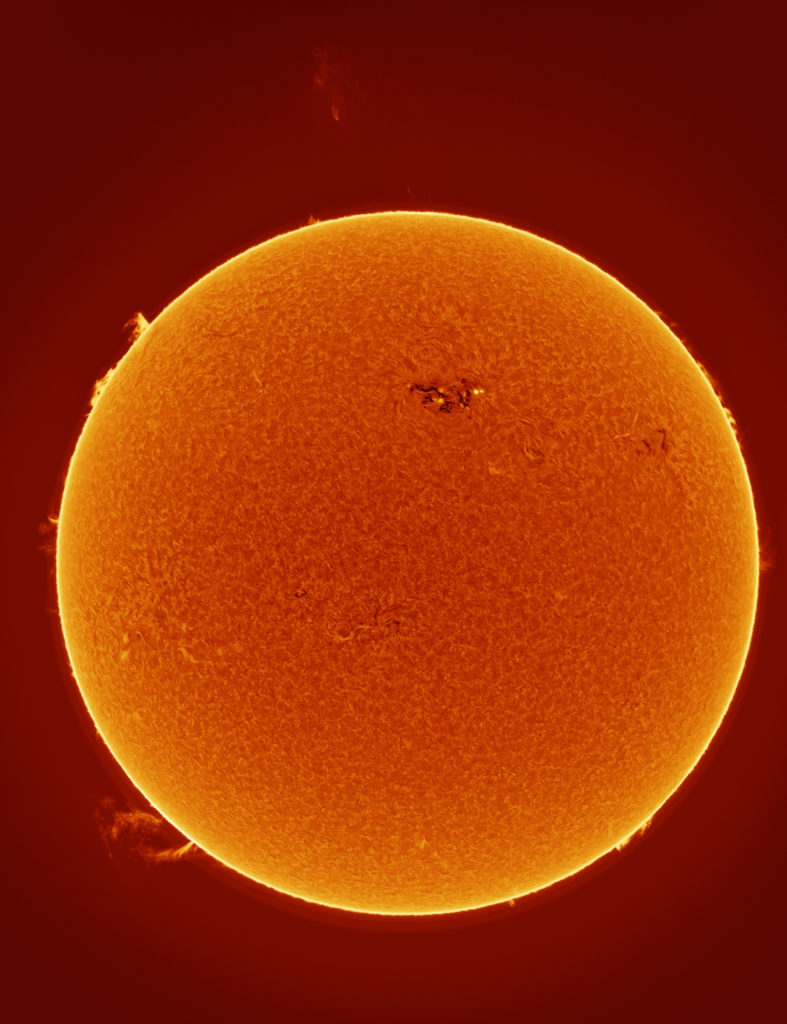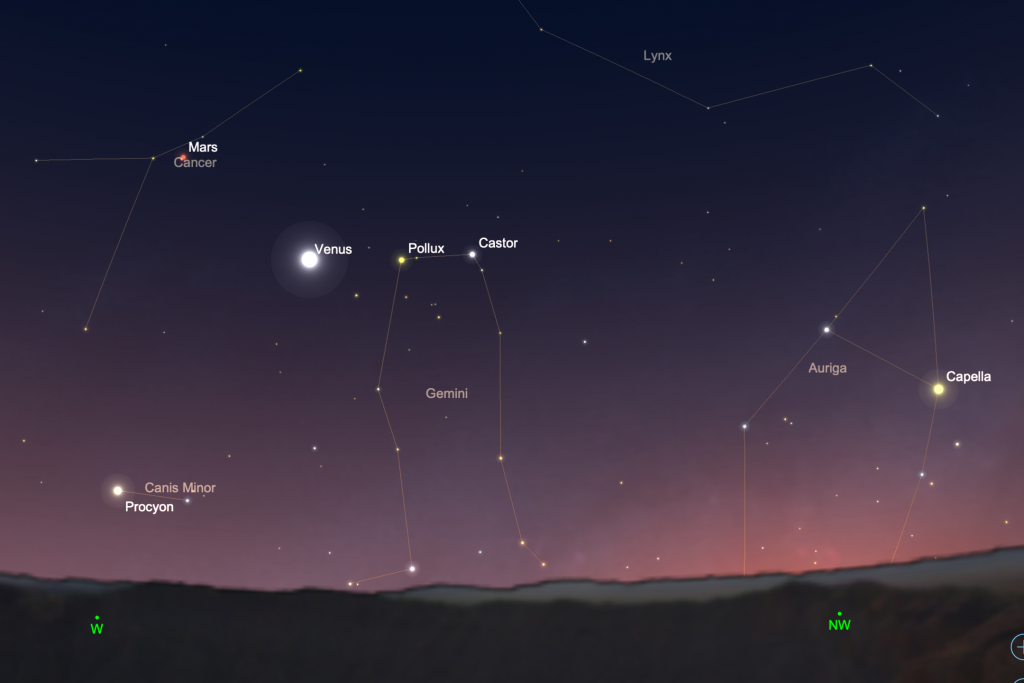
(Looking for last month’s ‘Night Sky’? Find it at this link…)
The June solstice arrives as stargazers in the southern hemisphere enjoy long nights and cooler temperatures, while we northerners enjoy some heat but much shorter nights. There’s plenty to see this month as Venus, Mars, and the Moon play among the stars in the western sky after sunset, while Jupiter and Saturn grow in brightness and size in the eastern pre-dawn sky. Both Mars and Venus also make close conjunctions with the Beehive star cluster and with each other. And ‘Milky Way season’ gets underway as the thickest and brightest part of our galaxy emerges over the southern horizon through Scorpius and Sagittarius. Here’s what to see in the night sky this month…
1-2 June 2023. Venus forms a line with Castor and Pollux in the northwestern sky as darkness falls. The planet lies about 5o from Pollux, which itself is about 5o from Castor.

2 June. Mars makes a close approach to M44, the Beehive Star Cluster, with Venus and Castor and Pollux shining brightly to the west in the northwestern sky after sunset. Use a pair of binoculars to see the stars of M44 together with the Red Planet. Venus presents a splendid sight all month and reaches greatest eastern elongation on June 4 when it lies a full 45o from the Sun. Its disk is half lit and shines at magnitude -4.3.
3 June. The nearly full Moon lies less than 4o east of Antares all night over the southern horizon.
4 June. Full Moon, 03:42 UTC (The ‘Strawberry Moon’)
10 June. Last Quarter Moon, 19:31 UTC
10 June. Saturn and the Moon move together about 7o apart in the southeastern sky before dawn.
13 June. Remember Mars and the Beehive earlier in the month? Now Venus takes a turn grazing this little star cluster. Grab a pair of binoculars and see the brilliant planet on its outskirts. The bright twilight makes it a challenging observation to see the cluster.

14 June. The waning crescent Moon rises about 2o from Jupiter in the eastern morning sky before sunrise. The planet rises earlier each morning in Aries and begins to adorn the morning sky in the coming months. The planet’s disk has grown to an apparent diameter of 35” and it shines at magnitude -2.1. If you’re out with your telescope, have a look.
16 June. Now wafer thin, the waning Moon lies near the Pleiades and Mercury in the eastern early-morning sky.
18 June. New Moon, 04:37 UTC
18 June. Saturn begins retrograde motion, now moving westward against the background stars in Aquarius in the early-morning sky as it slowly brightens and grows.

21 June. The Sun reaches its northernmost point on the ecliptic at 14:58 UT. This solstice marks the beginning of summer in the northern hemisphere and winter in the southern hemisphere, and the longest and shortest days of the year, respectively.
21 June. Look for Venus, Mars, and the thickening crescent Moon in the west after sunset.
22 June. Venus, Mars, the Moon and the bright star Regulus congregate in the western sky after sunset.
26 June. First Quarter Moon, 07:50 UTC
28 June. After attracting attention all month in the western twilight sky, Mars and Venus move within 4o of each other, a lovely sight with or without optical aid. The planets remain close for the next week or so. Mars continues to move towards the Sun and appears too small to reveal much detail in a telescope.